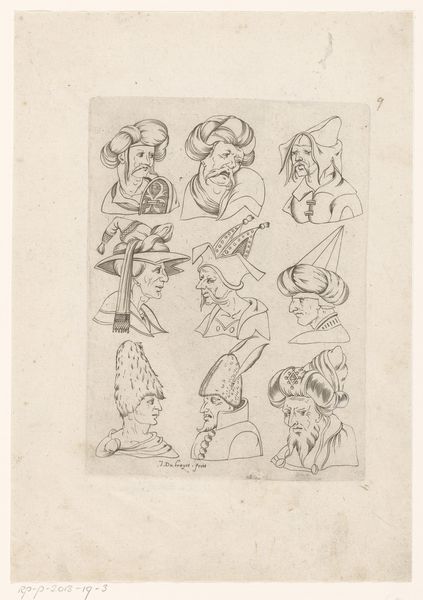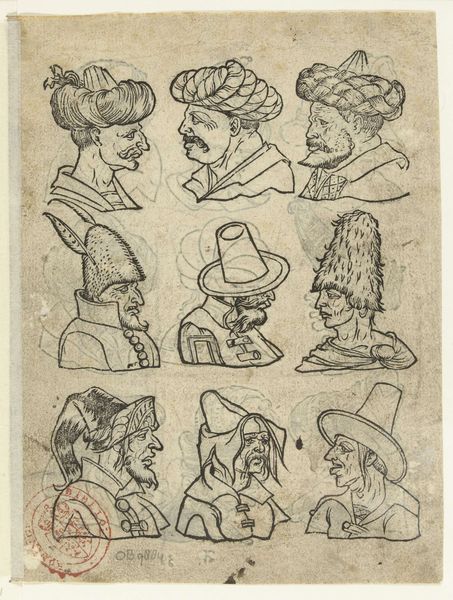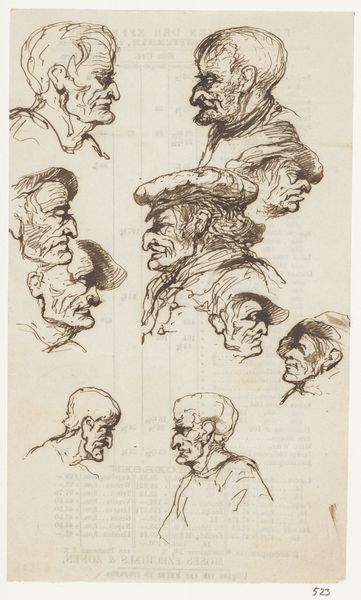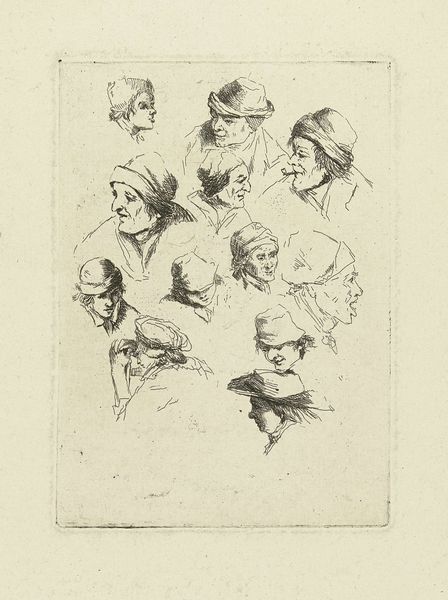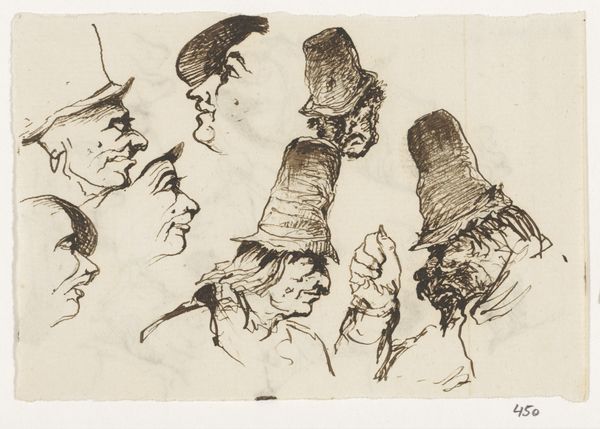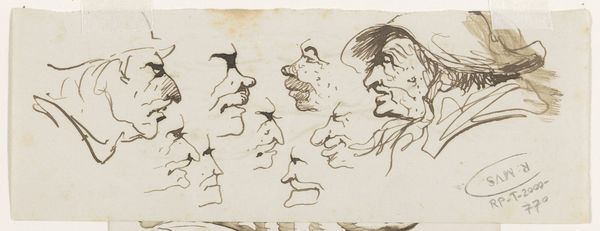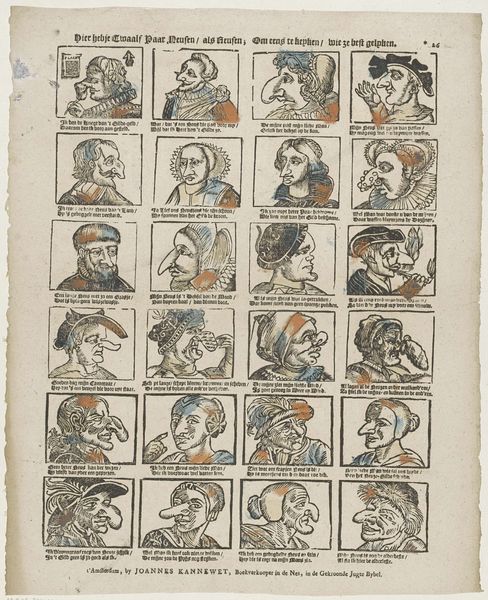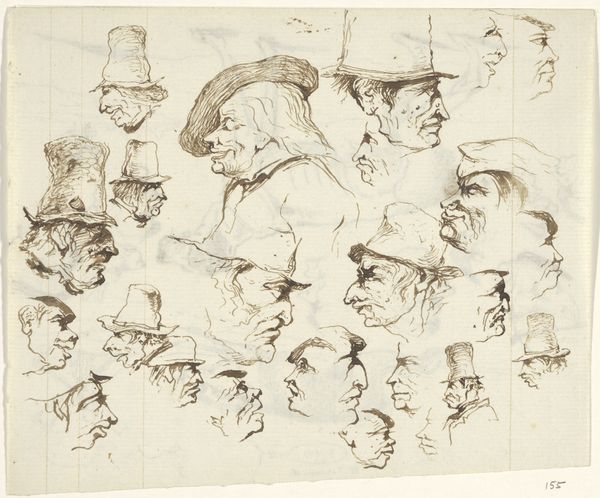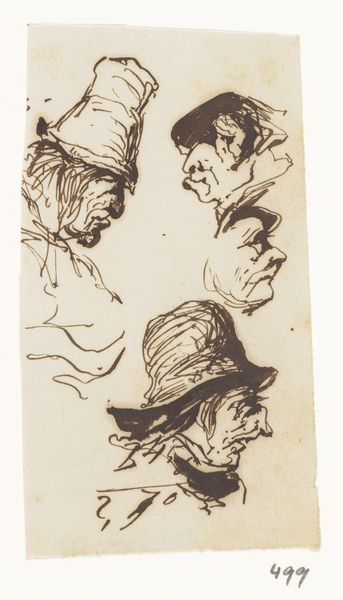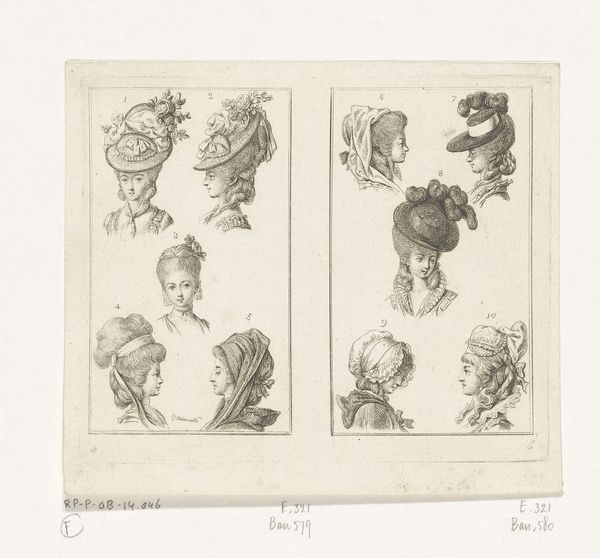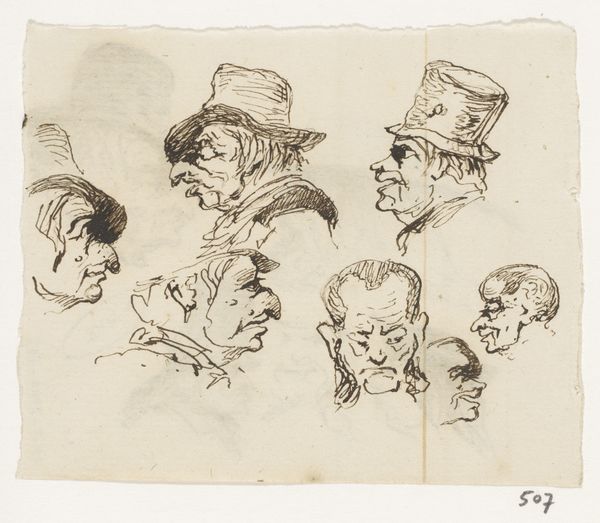
Negen mannenhoofden met verschillende soorten hoofdbedekkingen, zoals tulbanden 1500 - 1568
0:00
0:00
drawing, ink, pen
#
portrait
#
drawing
#
pen sketch
#
figuration
#
11_renaissance
#
ink
#
ink drawing experimentation
#
pen
#
northern-renaissance
Dimensions: height 173 mm, width 130 mm
Copyright: Rijks Museum: Open Domain
Curator: This engaging work is titled "Negen mannenhoofden met verschillende soorten hoofdbedekkingen, zoals tulbanden," which translates to "Nine Male Heads with Different Types of Head Coverings, Such as Turbans." It's an ink drawing, made with pen, from sometime between 1500 and 1568. Editor: It has such a fantastical quality. I'm immediately struck by how theatrical all the headwear is; each seems to invent its own logic and demands attention. The detail, for being simple line work, evokes such a range of characters. Curator: Yes, consider the material limitations overcome here: using just pen and ink, an anonymous artist achieved incredible detail, texture, and variety in these head coverings. It also raises the question of production – was this preparatory work? Was it study from observation, a sampling of costume perhaps, or was it simply an exploration of craft and artistry? Editor: Given the range of turbans and other headwear, the drawing might reflect a fascination with diverse cultures, possibly documenting interactions or even anxieties around foreign communities within Europe at that time. How does the depiction of these men – presumably imagined, given the anonymity of the work – speak to power dynamics? Curator: Absolutely, the paper itself – its production, cost, and availability – determined the scale and detail possible in this drawing. Furthermore, the accessibility of ink compared to other drawing mediums certainly facilitated its creation and distribution as potentially a workshop drawing passed between different makers or studios. Editor: The concept of ‘the head’ in portraiture is so interesting, then layered by cultural and religious symbolism implied in the hats! These aren't just portraits; they are statements. Even in this somewhat raw sketch form, the social weight of attire comes across. It feels like the artist might have wanted to depict the individual, as he also portrays the character, or a theatrical figure, behind. Curator: Precisely. Understanding this from a materialist approach asks us to remember the very physical work that went into each pen stroke, consider the light in which this piece would have been made, or shared, which leads us back to these complex identities you've helped explore and appreciate! Editor: I appreciate that! Hopefully, our viewers now understand a bit more about what histories an image like this one encapsulates.
Comments
No comments
Be the first to comment and join the conversation on the ultimate creative platform.
